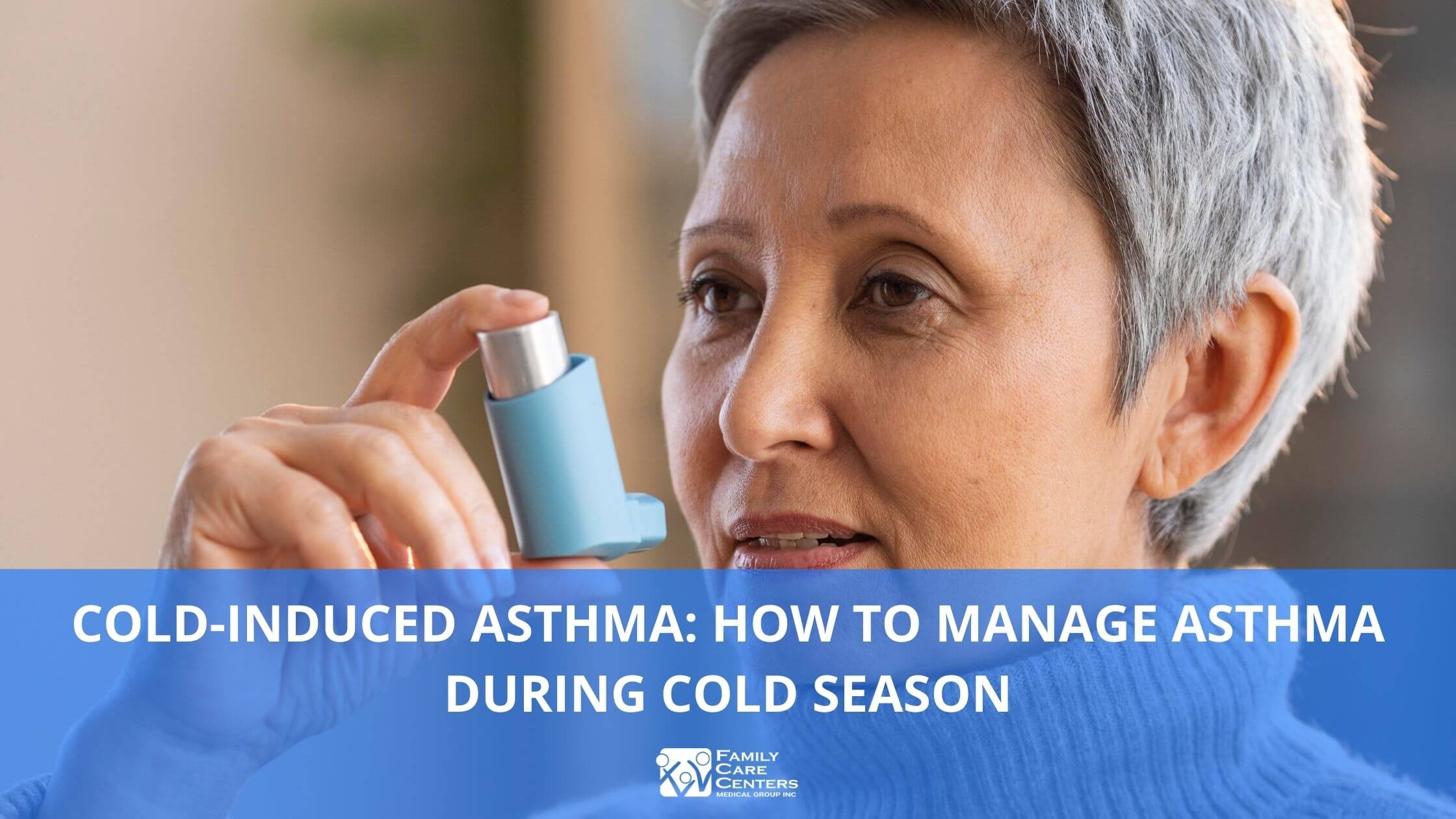

Fountain Valley Urgent Care Permanently Closed. We’re Here to Care for You at Our Other Locations.

Asthma episodes can occur at any time of the year. However, Winter can be a particularly difficult time for asthma patients.
Asthma is a chronic respiratory condition where the airways in the lungs periodically get irritated and narrowed, causing wheezing and shortness of breath. If you have it, you may notice that your symptoms occur more often when the weather is cold, making it harder to breathe.
The difference between asthma and cold-induced asthma are their triggers. Common asthma triggers are:
During winter, the air tends to be extra dry (both outdoor and indoor from central heating). When you inhale dry air, the fluid in your airways evaporates faster, which irritates and inflames them.
Your body needs more oxygen while exercising, so it is common to breathe through your mouth. However, unlike breathing through your nose that warms and humidifies the air by passing it through your sinuses, breathing through your mouth does not “treat” the air before it reaches your lungs. The cold dry air you inhale through your mouth can trigger your asthma symptoms.
Your airways are protected with a layer of mucus. During winter, your body produces more mucus that is stickier and thicker than usual. This extra mucus increases your likelihood of getting respiratory infections, such as the flu or common cold. These respiratory infections may inflame and irritate your airways, triggering asthma attacks.
During winter, you usually spend more time indoors. This may expose you to indoor allergens that trigger your asthma symptoms, including dust mites, pet dander, mold, etc.
No, the symptoms of asthma and cold-triggered asthma are the same, including:
Washing your hands with soap and water or alcohol-based sanitizers can reduce the likelihood of contracting the cold and other viral infections. Similarly, wearing a mask, especially an N95 or KN94, can significantly reduce your exposure to inhaled, airborne viruses.
Like tobacco smoke, wood smoke can also irritate your lungs, triggering asthma symptoms.
During winter, it may be better to exercise indoors (either at home or in the gym), if the humidity is higher and temperatures won’t be as low as outside.
When you are outside in the cold weather, breathe through your nose, as your nose and sinuses will warm and humidify the air before it reaches your airways. You can also wear a scarf, face mask, or muffler over your mouth and nose to warm the air.
With decreasing temperatures, your asthma symptoms may flare up anytime. Therefore, take your regular inhaler or a preventative dose of your asthma medicine before going out, whether to exercise, run errands, or walk in the park.
If your heating system’s filters are not cleaned or replaced periodically, they may blow dust and debris around your house, triggering your asthma symptoms. To avoid this, clean the filters regularly and replace them as needed.
Take your prescribed medications on time, and refill them as needed to avoid skipping doses. If your regular asthma medicines do not give you the desired relief, visit your healthcare provider to review your treatment plan during winter. They may change medications or recommend other strategies to manage your condition.
Asthma patients are at risk for getting their asthma triggered by chest infections — and having worse symptoms because of the combined asthma and infection. Complications can include significant difficulty breathing and progression to pneumonia. Because of these risks, we recommend getting an annual flu shot, considering the Covid vaccination and booster, and discussing a pneumonia vaccine (especially if recommended by your regular doctor).
Work with your healthcare provider to create an asthma action plan that may include details about recognizing and managing an asthma attack, tracking symptoms, adjusting medications accordingly, and knowing when to seek emergency care. Having an action plan would be helpful to keep your asthma symptoms under control, despite the season.
If you are suffering from asthma and are seeking medical assistance for quick relief, visit one of our urgent care clinics: Irvine Woodbridge Walk-In Urgent Care, Fountain Valley Urgent Care, or Costa Mesa Urgent Care. We are committed to offering high-quality asthma care and treatment.
Share Your Valuable Thought